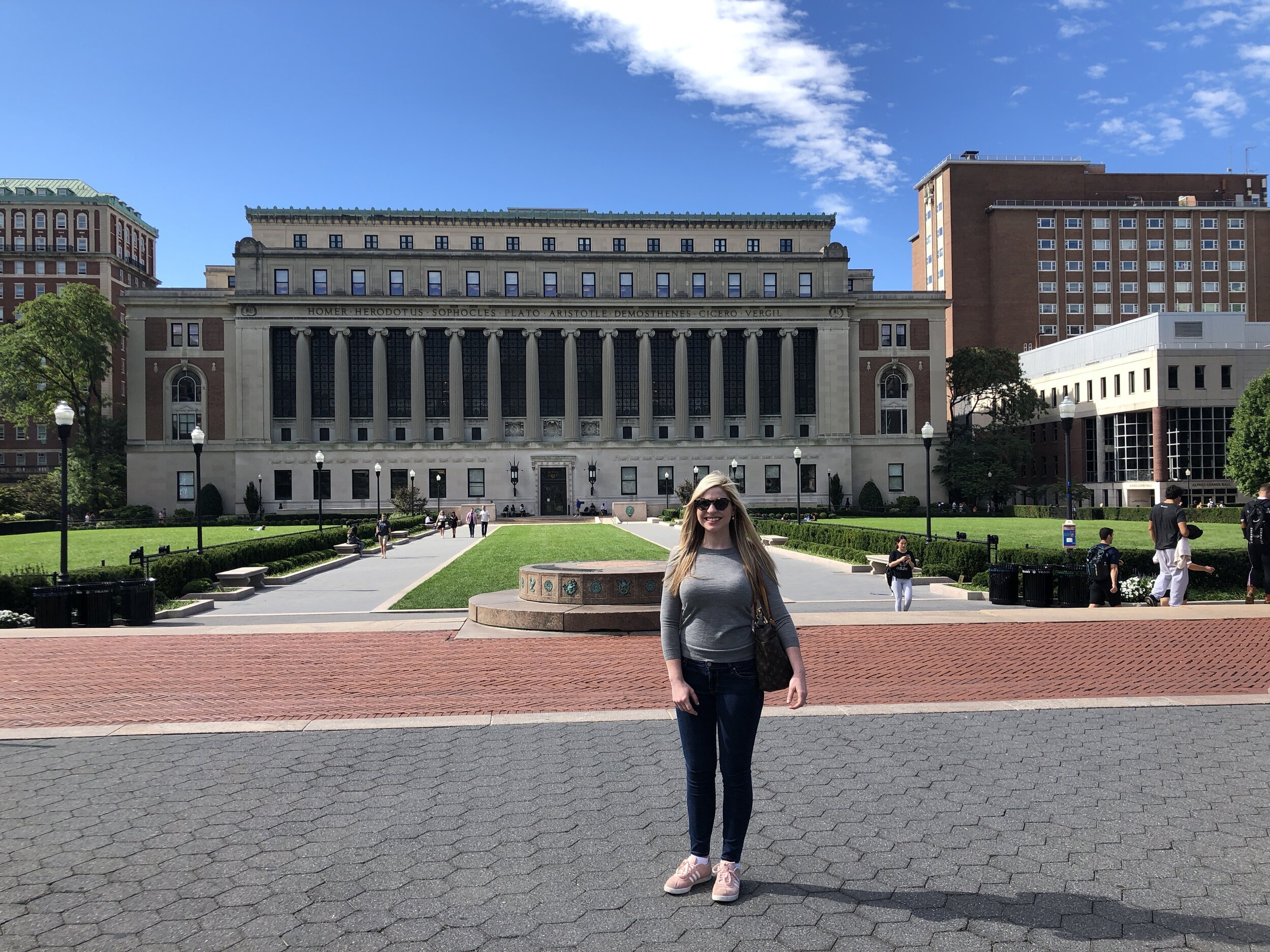We are heading back to our General Education Curriculum Series and moving out of Virginia this week with an up-close look at Columbia’s curriculum.
We chose Columbia because it is one of the schools with the most emphasis on a robust set of general education requirements for students in Columbia College, the Arts and Sciences division (students who enter into the Fu Foundation School of Engineering and Applied Science will have different requirements).
It always strikes me as interesting that so many students who apply to Columbia don’t understand the Core Curriculum or realize that the academic experience there is very different from most other schools as a result of it. I don’t think it’s coincidental that the Columbia application includes more than one essay regarding fit - they want to know if you know that they have the Core Curriculum in the first place, if you understand what it entails and why they believe it is valuable, and the reasons you think it would be a good fit for you!
If you don’t mention it at all in your application, they are just going to assume that you are “checking off the box” and applying to Columbia “for the wrong reasons” - because it’s an Ivy League school, because it’s in New York City, and so forth.
Let’s dive in!
Unlike the general education requirements we outlined at William & Mary and UVa, Columbia’s Core Curriculum requires that ALL students take the exact same course to fulfill many of their requirements - meaning that students in these courses are doing the same readings and assignments at the exact same time.
Core CURRICULUM COURSES
Literature Humanities
This course is taken by every single first-year Columbia College student. Students read and discuss works by Homer and Dante (which haven’t left the required reading list since the curriculum was implemented 75 years ago!), as well as canonical texts like Montaigne’s Essays or Virginia Woolf’s To the Lighthouse. Students read and discuss one text each week in seminars of about 20 students, and each seminar moves through the exact same texts at the same pace.
University Writing
First-year students are also required to take one semester of a University Writing course. In this case, students do have the option to choose a topic: American Studies, Gender & Sexuality, Human Rights, Data & Society, and Medical Humanities are some of the options for students here. However, no matter which class you take, you will be writing the same four essay assignments as your fellow students: an analysis, a reading of multiple texts, a research paper, and an op-ed. This is different from many other schools, where first-year writing classes are left to the individual instructors to design.
Frontiers of Science
You may be noticing by now that your first year schedule is getting pretty full! Freshmen must also take a one-semester course in modern science. All students attend a large lecture on Mondays, and meet with professors or TAs in small seminars throughout the rest of the week to discuss the lecture and any associated readings. So again, though the seminars may be small, the material is the same for all first-year students.
Contemporary Civilization
This is the second-year core curriculum course. Like Literature Humanities, it is a full-year course where all students study the exact same texts at the same time, in small seminars. This original Core course has been offered since 1919 and includes texts like Plato’s Republic, the Hebrew Bible, the New Testament, and the Qur’an.
Art Humanities
Before their senior year, students must also take one semester-long course in important works of Western art. In 20-person seminars, students examine and analyze these pieces. Classes can make use of Columbia’s NYC location to visit buildings, monuments, and museums as part of their art exploration. The requirement to study art history or art analysis is very unusual for undergraduate programs of study.
Music Humanities
In addition to Art Humanities, students also take a semester-long course in important works of Western music. Like Art Humanities, Music Humanities has been part of the core curriculum since 1947, and is also a very unusual requirement for an undergraduate program.
In addition to these strict core courses, Columbia students also have general education requirements similar to those at the schools we’ve already discussed. However, they can be met by multiple courses and offer some flexibility.
Requirements
Science Requirement
Students must take ten credits (typically three courses) in science in order to meet this requirement. The required Frontiers of Science course counts toward the science requirement, so students who take that course in their first year must take two additional courses in science before they graduate. These courses are typically in Astronomy, Chemistry, Biology, Environmental Science, or Physics, though this requirement can also be met by some Math and Computer Science courses.
Global Core Requirement
Global Core courses typically explore the cultures of Africa, Asia, the Americas, and the Middle East in a historical context. These survey courses are meant as a supplement to the Western-focused required core classes. Students must take two courses to meet the Global Core requirement. This requirement is met by many courses in History, Religion, and Cultural Studies.
Foreign Language Requirement
This requirement, unlike the others, can be met by an AP test or by a Columbia-administered test for students who have already achieved intermediate proficiency in a foreign language. Otherwise, students are required to take an intermediate-level foreign language course to meet this requirement. Like many other schools, Columbia waives this requirement for students whose first language is not English.
Physical Education Requirement
Another surprising one, although not quite as rare as the art and music requirements - Columbia is one of the institutions that require students to take a physical education course! Completion of two physical education activities is required in order to graduate. Student-athletes can also gain credits through their sport. In addition, all students are required to either pass a swimming test or take one semester of a beginner’s swimming course unless they have a registered disability that does not allow them to do so.
As you may be able to tell, Columbia is SERIOUS about its Core Curriculum. Here are our three takeaways:
1. You’ll get the breadth
No matter which type of student you are, Columbia’s curriculum will likely require you to take a class that you’re not too excited about. While some students may see this as a negative (I would have, for sure), others intentionally seek it out. They believe that it will help them to explore outside of their interests and maybe give them the opportunity them to fall in love with a subject that they never even knew about in high school! If you are looking for a true liberal arts experience, with a wide array of courses, this might be a great choice for you, but students who know what they want to study and don’t want to do a whole lot of writing and analysis may become frustrated with all of the core classes.
2. You’re in good company
Did you read those dates earlier? Some of Columbia’s core courses have been around since 1919! That means that not only will you be learning the exact same material as your classmates, you will also be learning some of the same material as most Columbia alumni! The Core Curriculum will help you to connect and commiserate with your freshman hall-mates about the course material, and also provide you with a talking point for all of the networking you’ll be doing with alumni as a senior!
3. You don’t have a lot of space
As you may have realized reading through that list of courses and requirements, Columbia does not give you nearly as much space in your schedule as some other schools. If you really want to dive deep into your major, or if there are other electives that you want the chance to explore beyond those listed, this type of curriculum might make you feel frustrated and stuck. So consider carefully how you will feel about these requirements before applying to a school that has a lot of them!












